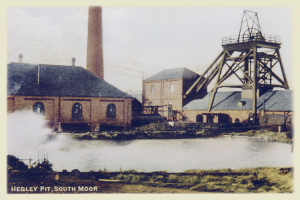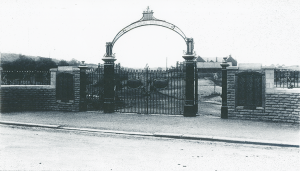South Moor
The name, South Moor, comes from the area which was known as the south moor of Beamish which stretched from Beamish almost to Annfield Plain and at one time was classed as wasteland. The village of South Moor was established in 1840 as a result of the opening up of coalfields in the area.
In 1826 William Hedley became a partner with William Bell, James Morrison and George Hunter who were owners of vast coalfields in Northumberland and Durham. The same William Hedley invented the famous ‘Puffing Billy’ locomotive in 1813. In 1839 the company decided to open up the southern side of their coalfields.
The moor south of neighbouring Stanley was to be transformed into a working coalfield with surrounding village and so South Moor came in to existence with the sinking of the William Pit. Men from Durham, Cornwall and Norfolk came to sink the pits. From then on there was a great influx of miners and their families, which in their turn attracted tradesmen. Houses, shops, the Co-operative Society, inns and even an hotel were built as the coalfield was opened up.
With the discovery of coal, the area developed rapidly with the expansion of coal mining. The West Craghead Colliery opened in 1839 and when it was realised the extent of the coal in the area several other mines were opened. There was a big influx of miners and their families and the village grew quite quickly, bringing in the shops, churches, schools and hotels to satisfy the needs of the population.
In the early 1900s a Mine Rescue Station was established and located here, as was a hospital to serve the miners and their families. This was known as the Holmside and South Moor Welfare Fund Hospital and was largely funded by the miners themselves.
South Moor Cricket Club were a force to be reckoned with on the pitch and the South Moor Operatic Society had a formidable reputation for the high quality of their productions and performances.
Film fans were well catered for, at one time there were three cinemas in the village, the Arcadia, Tivoli and Rose Avenue Picture Hall.
 Memorial Park
Memorial Park
South Moor is the home of Memorial Park, given to the Town by the South Moor Colliery Company Ltd in 1920 as a memorial to the men of South Moor who fell during the Great War. The Park has beautiful wrought iron gates and tablets inscribed with the names of the men. Further plaques were added after the Second World War and the Korean conflict.
